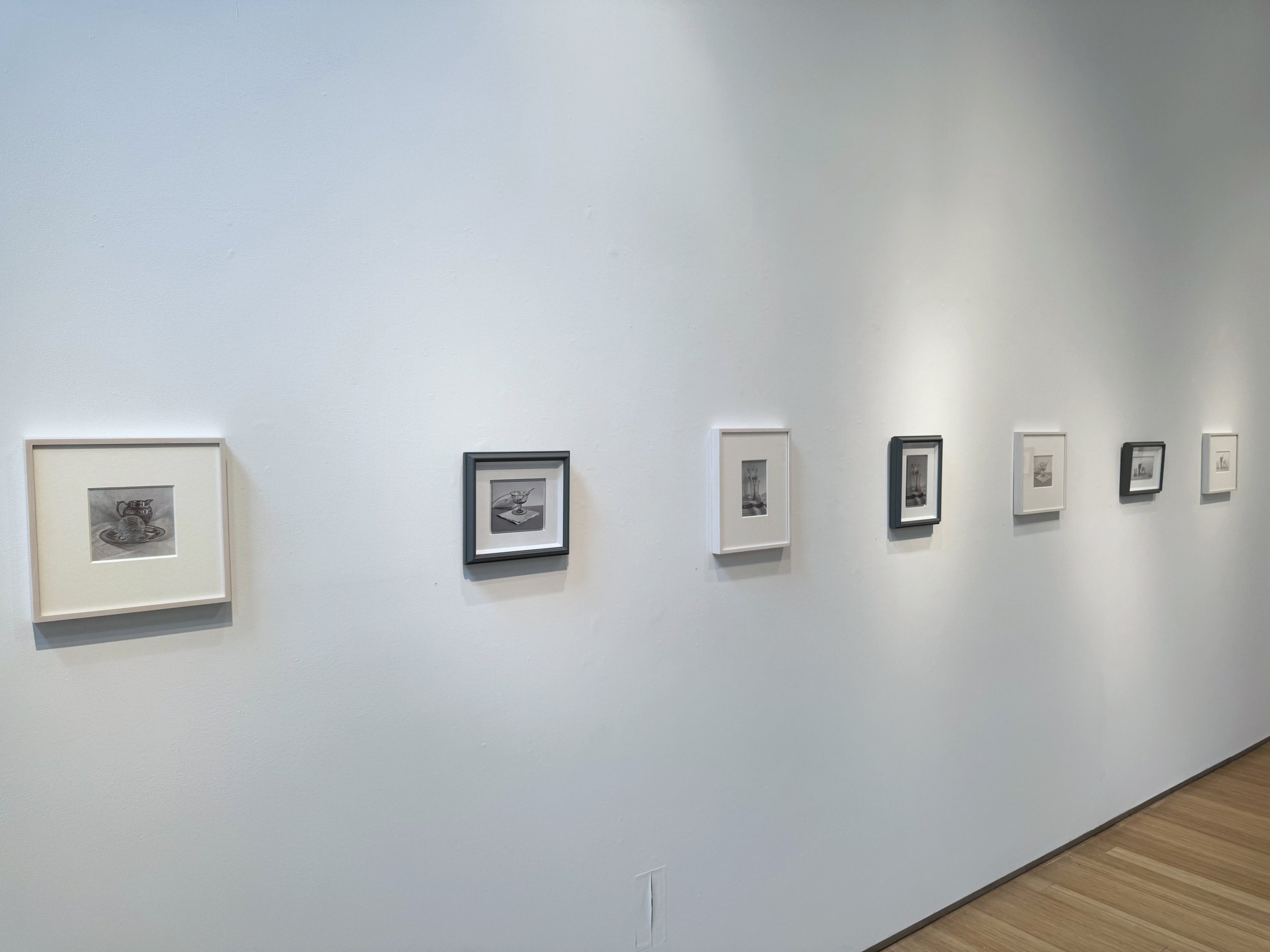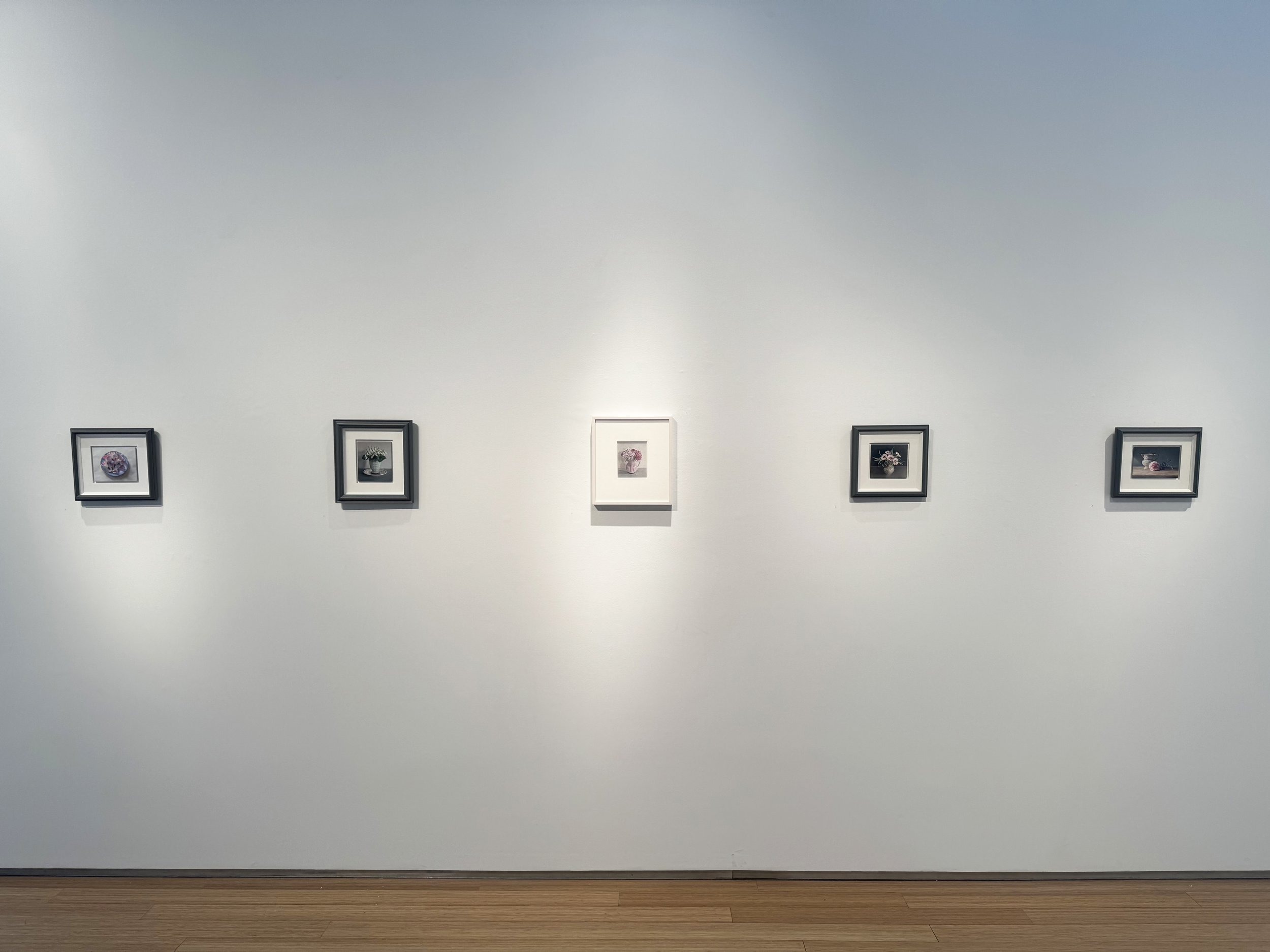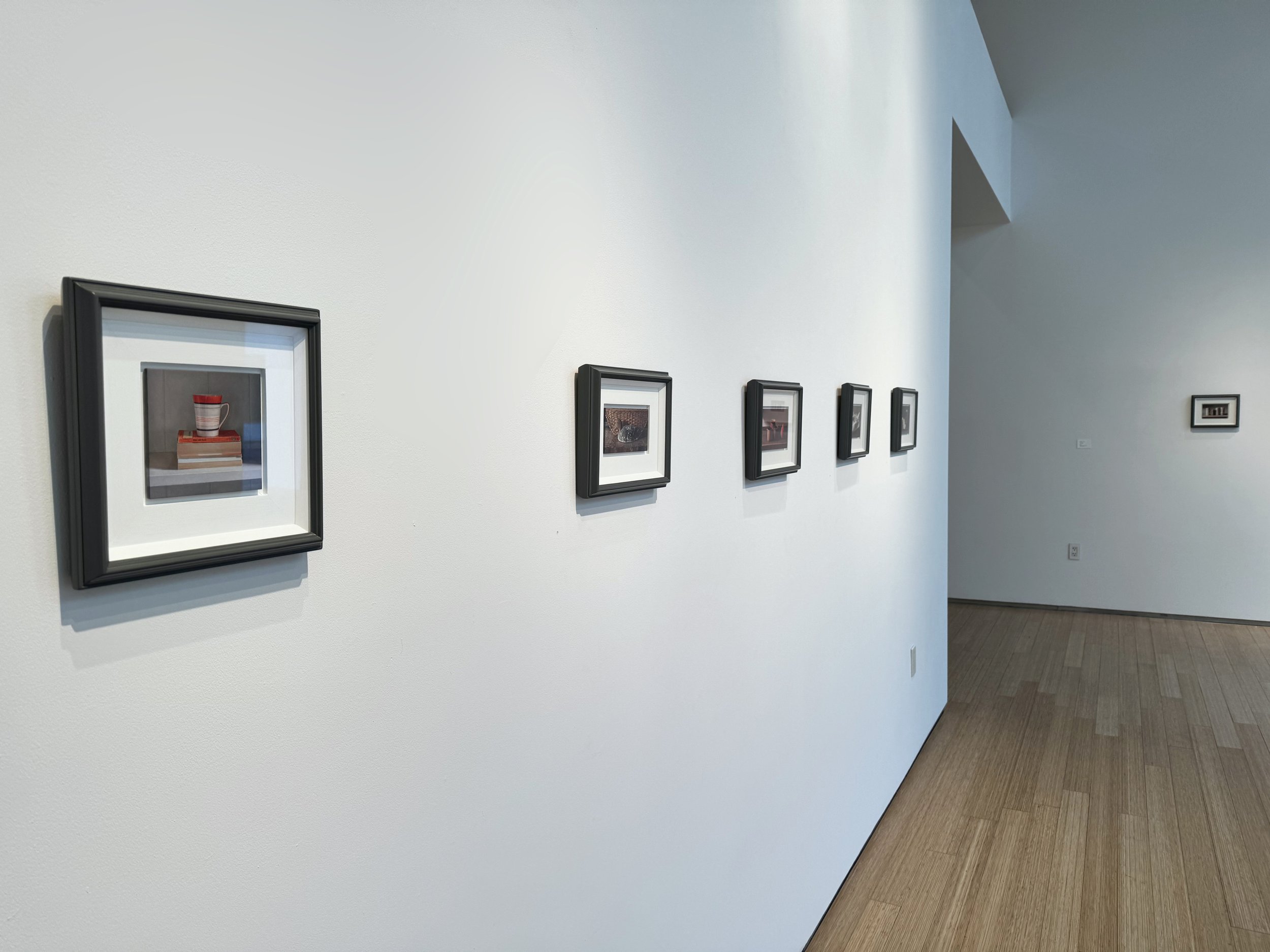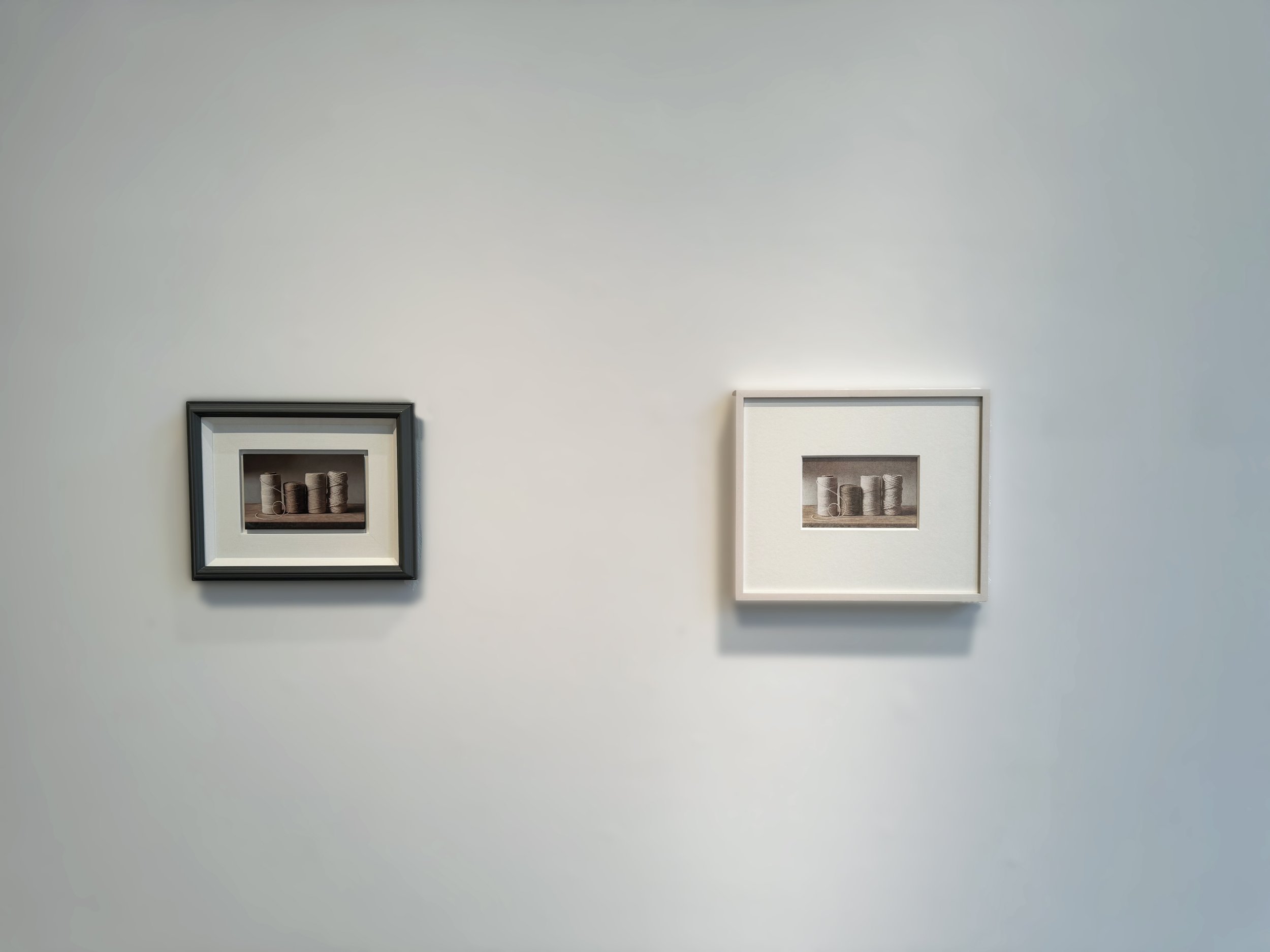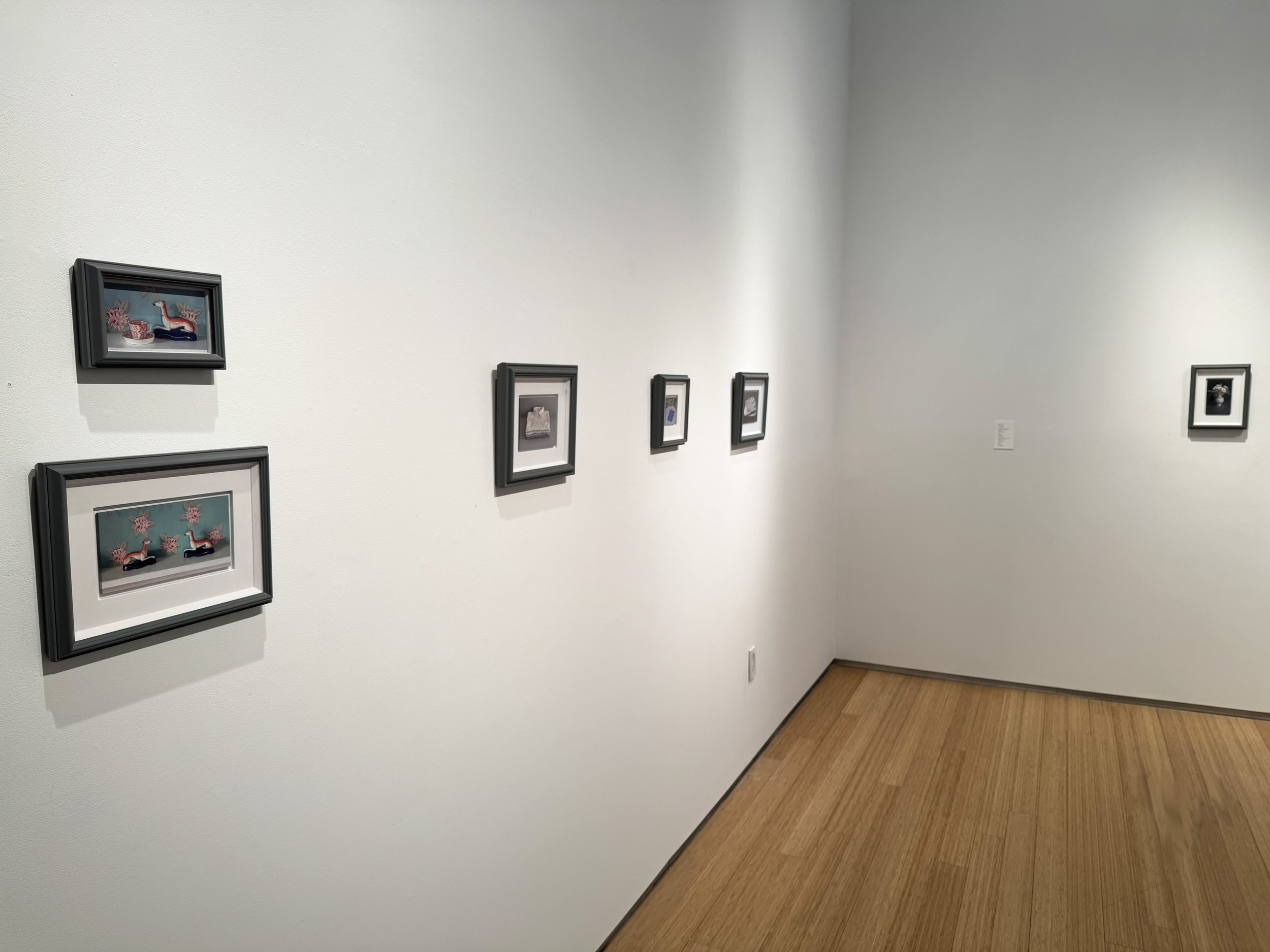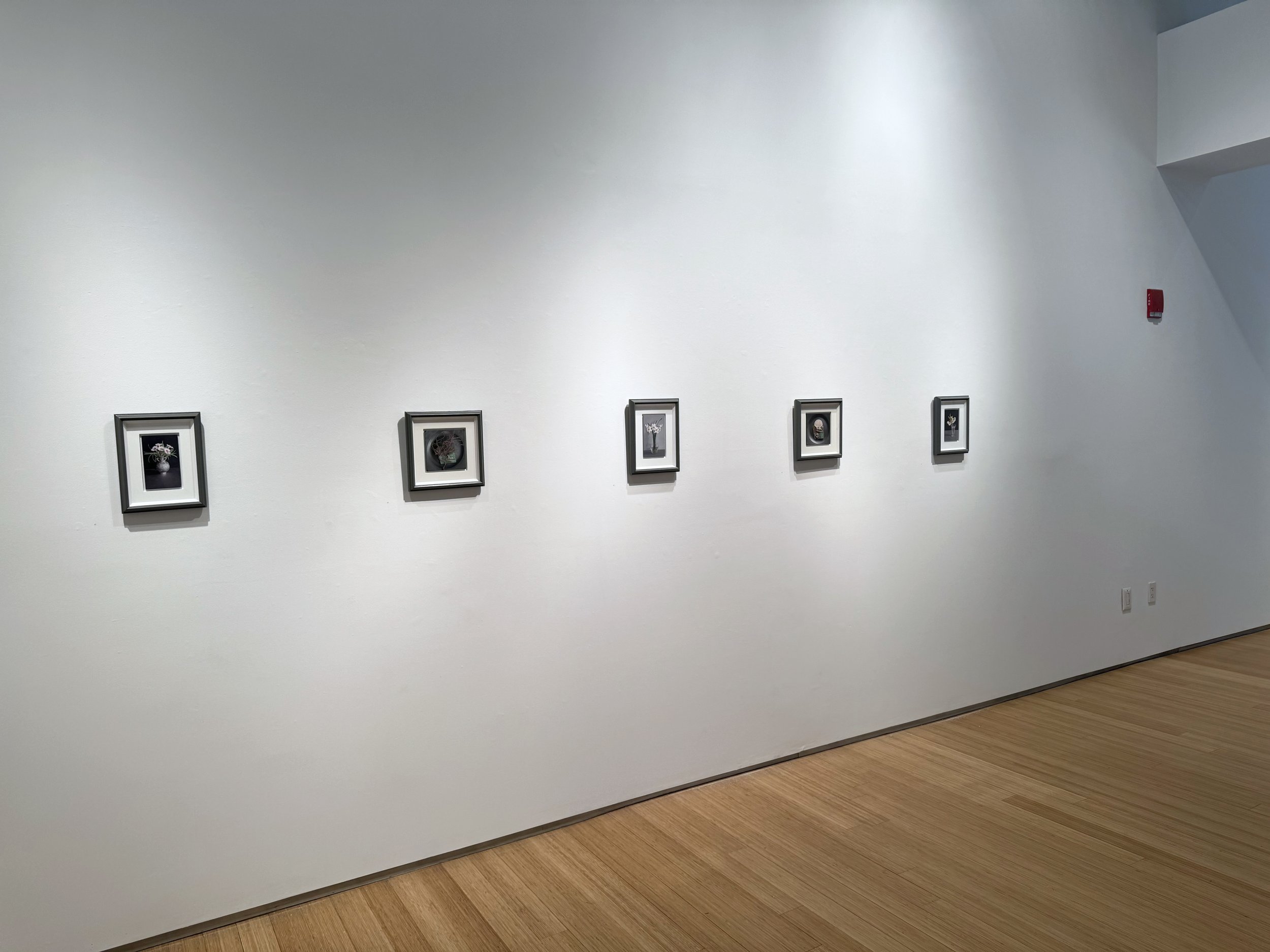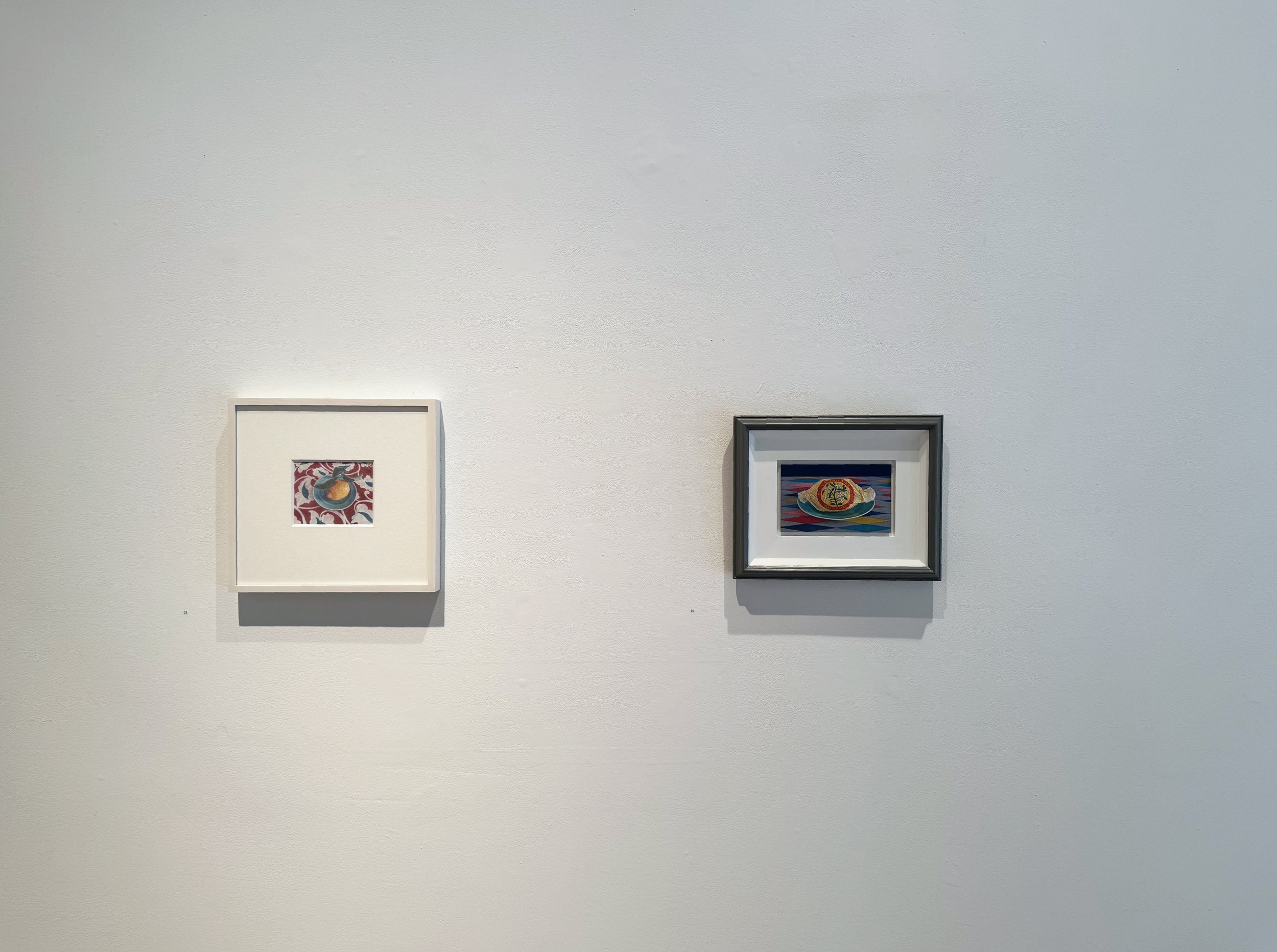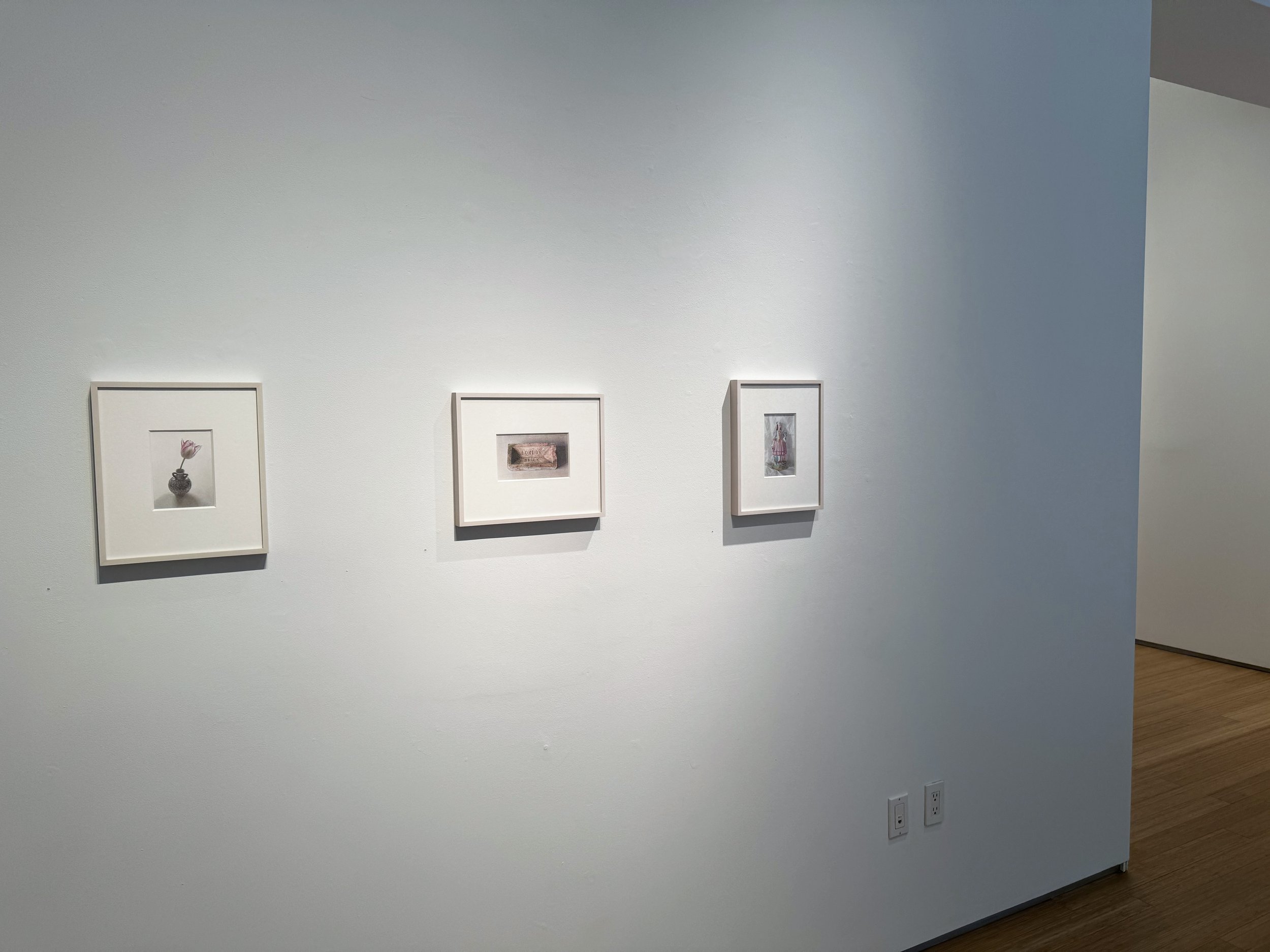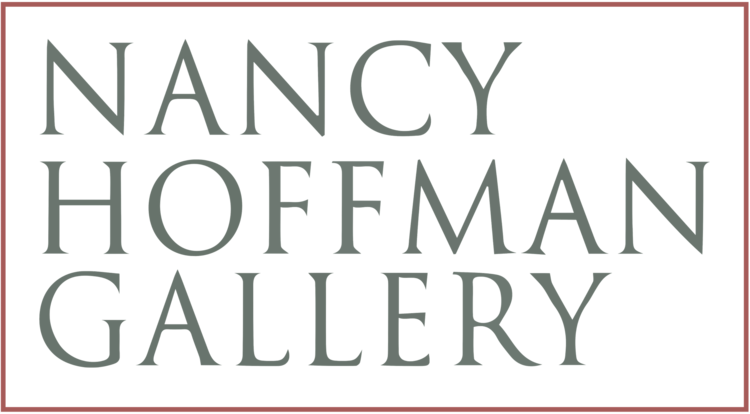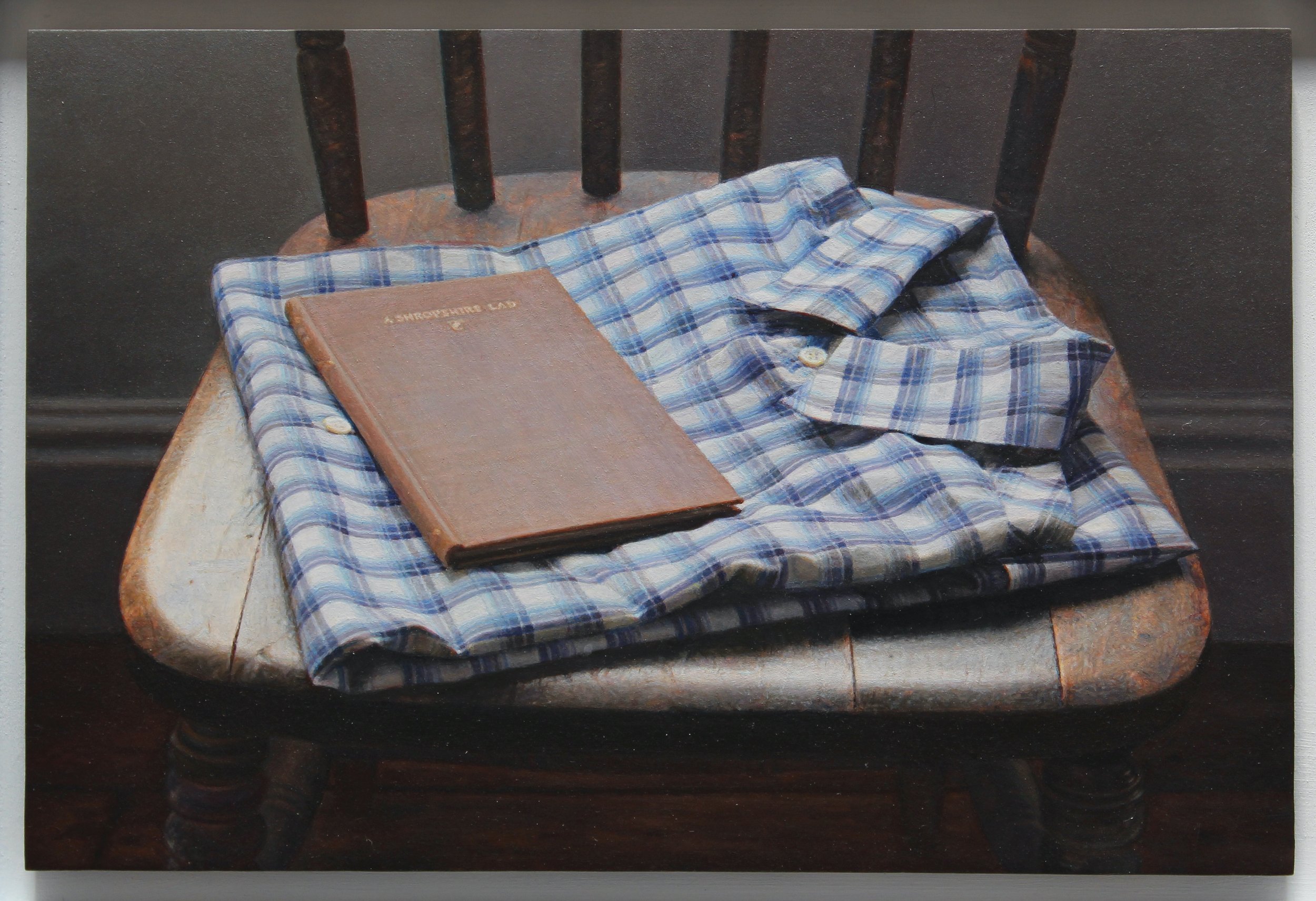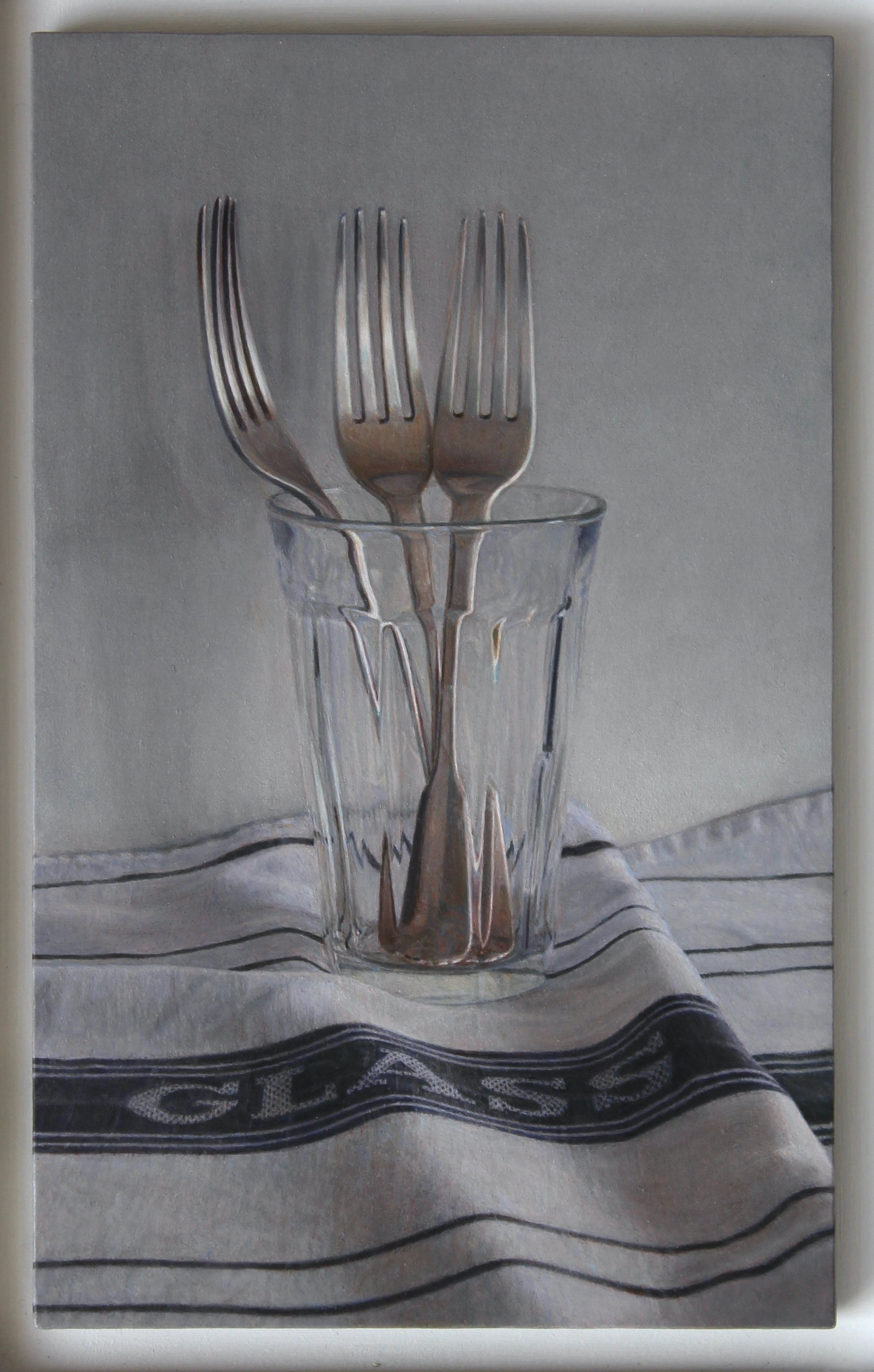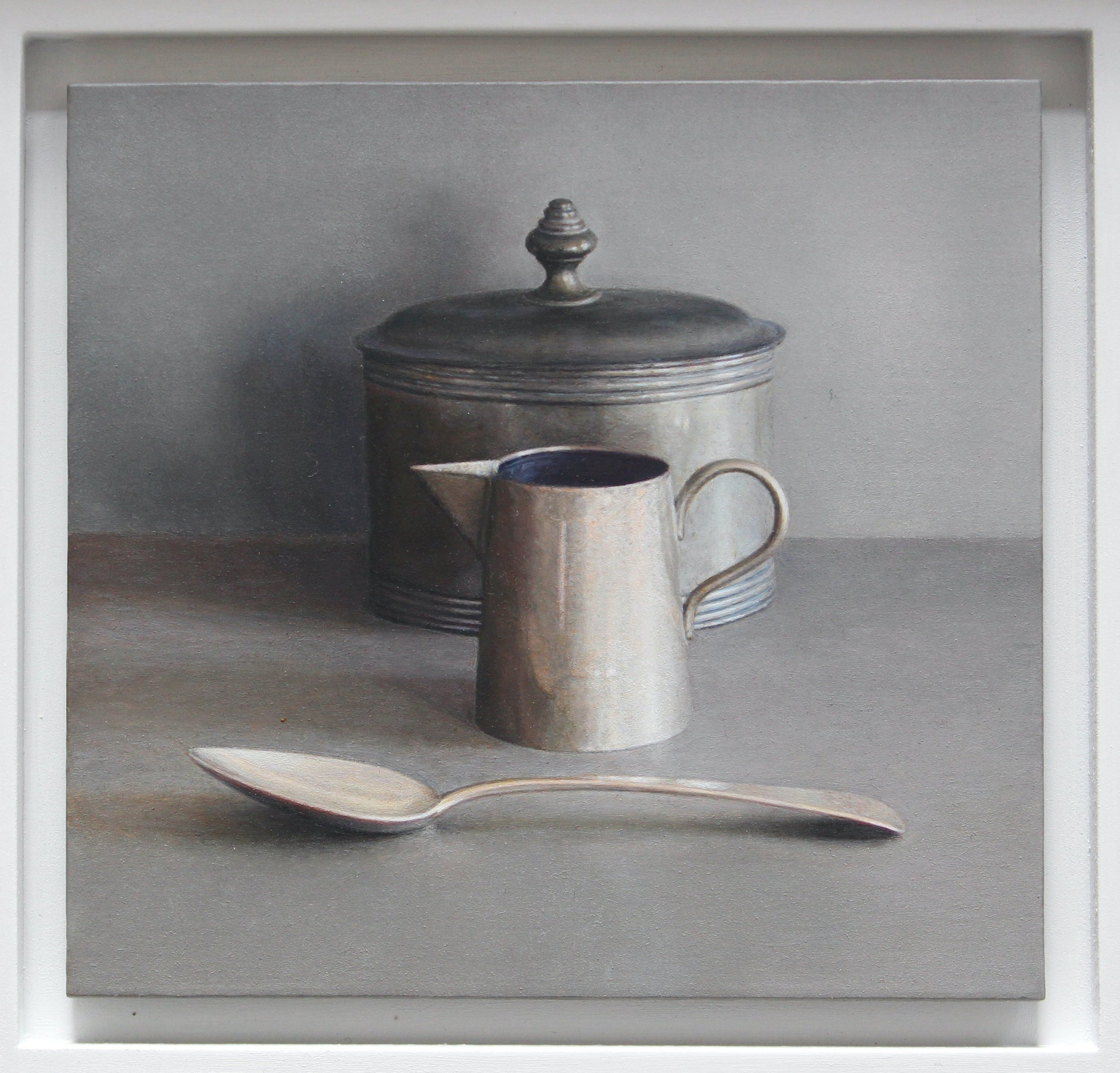LUCY MACKENZIE
Still
March 21 - May 25, 2024
IN THE NEWS
Paintings
1. Can you describe your process when you make paintings and drawings?
All around us there are visually interesting objects. The challenge I have chosen, as a painter of still life, is to select, compose and transform small groups of objects into images which have a lasting resonance. Keeping an eye open every day for potential subjects, both in and outside the home, is second nature to me.
I might catch sight of something in a street market, or in my garden, or at the back of a kitchen cupboard, that leads to the start of a “conversation”, as Morandi described it, between the newly found object and other items I have collected earlier.
Then follow hours, days, (even years!) of trying out ways to arrange the selected objects, with a source of daylight that enhances the particular mood. Holding up cardboard frames of various sizes in front of the still life helps in visualising it flattened into two dimensions. For me, it is the shapes on the flat surface of a painting that are crucial, like a puzzle that has to be locked together.
Then I take lots of photographs, before making a drawing, priming a board with many layers of white gesso and beginning the painting. The first few days are spent doing an underpainting, to get down the basic colours and layout of the image. After this follows the long, intense, absorbing process of spending months creating the painting; returning each day to build up thin layers of paint using small brushstrokes all across the surface, constantly refining, altering, balancing, reassessing, to the point where the painting seems to reach, quite suddenly, a state of calm resolution.
2. How do you choose and assemble your subjects?
My choice of subjects varies widely. Even though the paintings are highly detailed and realistic, the abstract arrangement of shapes is as important as the content, colour and form.
By representing glass, china, flowers and reflective surfaces, I am conscious of continuing centuries-old traditions of still life painting. In addition to these, I try to find subjects that I have not seen painted by other artists, and to record them in a personal, original way.
Working within a close range of grey tones has interested me for several years and, as a contrast, I love making paintings of brightly coloured objects and patterned fabrics too.
Some objects are chosen for their emotional significance: an old model aeroplane; summer shirts; a sea-worn duck decoy found in a store beside the lagoon, on a memorable day in Venice.
Since schooldays, poetry has been important in my life. I keep collections of Seamus Heaney, Emily Dickinson and Carol Ann Duffy beside me in the studio.
The atmospheres of two poems in particular have permeated certain paintings in this show :
A Shropshire Lad by A E Housman and Anthem for Doomed Youth by Wilfred Owen. Housman’s themes are the passage of time, loss and love of people and countryside. He writes of “blue remembered hills”, and how “Loveliest of trees the cherry now Is hung with bloom along the bough”.
Near the end of the second verse of Wilfred Owen’s poem, where he is describing ways to remember the young men who lost their lives in the First World War, comes the exquisite line
"Their flowers the tenderness of patient minds”.
3. If you were to describe your work in one or two sentences, what would you say?
I make small, detailed, patiently observed oil paintings and colour pencil drawings, mainly of familiar domestic subjects, flowers or collected or found objects.
Through my choice and arrangement of subjects and colours, I try to create particular atmospheres, from serene through to joyful.
4. Is there anything about this newest body of work that feels different than what you have done before?
I am not an artist who reinvents herself for each new exhibition. It would seem strange to turn my back on a way of working I have spent a life-time refining and which is an intrinsic part of who I am. Inevitably, changing personal circumstances and the passing of time affect the work. I consider this group of paintings and drawings to be both more reflective and more joyful than previous shows.
The two paintings of found objects on a pewter plate are unlike anything I have done before. I wanted to convey a sense of archaeology, and the way unearthed ‘finds' are displayed at the end of the day. The small metal horse in these paintings is a World War 11 military cap badge that I found washed up on the sea shore, giving an added dimension of symbolism and mystery.
Drawings
Lucy Mackenzie - New Paintings and Drawings
On March 21 an exhibition of new paintings and drawings by Lucy Mackenzie opens at Nancy Hoffman Gallery, the artist’s first show in eight years, including oil paintings of intimate scale and drawings. The exhibition continues through May 25. Her 2015 show, Quiet, set the stage for the new works, which follow in its footsteps. With continuing commitment, Lucy Mackenzie composes images that convey serenity and poetic observation.
In this exhibition of over 40 works the viewer stops to reflect not simply on the artist’s choice of subject or object, but also on the appreciation for items we rarely take time to examine, enjoy or embrace.
The paintings measure from 3x3 inches up to 4x7 inches. The artist works for several months on each piece, creating around four paintings a year, objects of contemplation and devotion, each a timeless world, each a touchstone to a larger story of life.
Still life has been Mackenzie’s signature subject. While traditional themes of transparency and reflection have continued to fascinate her, the new paintings and drawings venture into unconventional territory. In French Cup and Paper Cases a finely pleated cupcake holder, waiting for batter, transcends its quotidian nature and becomes a vehicle for the artist’s symphony in grays and whites. In Summer Shirts colorful patterns peek through the folds of a freshly ironed pile of clothes. These everyday objects, isolated in pristine space, take on heroic and symbolic proportion. Not the “normal stuff” of still life, simple objects become a visual madeleine to memory. Pink Boat is an ode to the artist growing up in the Isles of Scilly. A traditional island boat, painted in an untraditional color by its female rowing crew, is moored near the shore in a sheltered bay. The viewer is witness to a moment suspended in time without the interference of people. A sunset-pink boat, forever floating and reflecting its color on the gentle waves of the sea.
Certain motifs recur throughout her oeuvre as leitmotifs, Mackenzie icons. In her recent work, subjects are more intimate and at the same time more sophisticated. Some of the subjects are commonplace objects, others spring from memory or are inspired by lines from favorite poets, including A.E. Housman, Wilfred Owen and Emily Dickinson. Mackenzie’s vision incorporates everything in her private world. Her home is a modestly curated work of art, with displays of china, fabrics, silver and collections of many kinds from many eras. Anything on which her eye alights might come under consideration for inclusion in a painting. The ordinary becomes extraordinary in Mackenzie’s hands. In her selection and close observation of objects, she finds beauty in a ball of twine, a London brick, a toy elephant, a cup perched atop a pile of books.
Quiet, timelessness, light, are refrains that echo through Mackenzie’s work. Her subjects range from familiar household items – a glass of just washed silver forks, a plain wooden chair, to seasonal flowers from her own garden. Snowdrops, cherry blossoms, morning glories, pinks, narcissi, Sweet Williams, a tulip and a single pink rose are celebrated in paint or pencil. Each flower is depicted with its own character. Pastel-striped morning glories, of a variety named Carnevale di Venezia, are arranged within the circle of a sky-blue china dish. These fragile flowers bloom and fade within a few hours. In contrast, Cherry Blossom and Cup has the drama of a stage set and recalls some of the Spanish painters and the palette of that nation where black and red are often juxtaposed.
For the first time, the artist has shared her love of Italy, the place and the art. Palermo Lemon, An Italian Visit, Morning Glories Carnevale di Venezia, Rose and Venetian Duck Decoy were all inspired by visits to Italy. The duck decoy was spotted in a second-hand store on the island of Burano.
Each of the artist’s still life pieces, while tiny in scale, is an invitation to a pure, uncluttered world. The totality is a portrait of the artist. Lucy Mackenzie provides the viewer with an example of the age-old adage: “it is important to stop and smell the roses.”
The catalogue Quiet, from Mackenzie’s 2015 exhibition, with an essay by Julian Barnes, is available at the gallery to anyone wishing to learn more about the artist.
Lucy Mackenzie was born in 1952 and grew up in the Isles of Scilly, England. She received a B.A. from Bristol Polytechnic and an M.A. from the Royal College of Art, London where she received the Princess of Wales Scholarship. The artist was awarded a fellowship at Gloucestershire College of Art and Design, Cheltenham. She was commissioned by Lord Esher, Rector of the Royal College of Art, for H.M. Queen Elizabeth 11, for a Silver Jubilee gift from the college. Mackenzie’s work has been shown in public venues abroad at the Royal College of Art, 150 Anniversary Painting Exhibition, London; Museo Municipal, Madrid; the Welsh Arts Council Touring Exhibition; and in this country at the Fine Arts Center Galleries, University of Rhode Island, Kingston.
